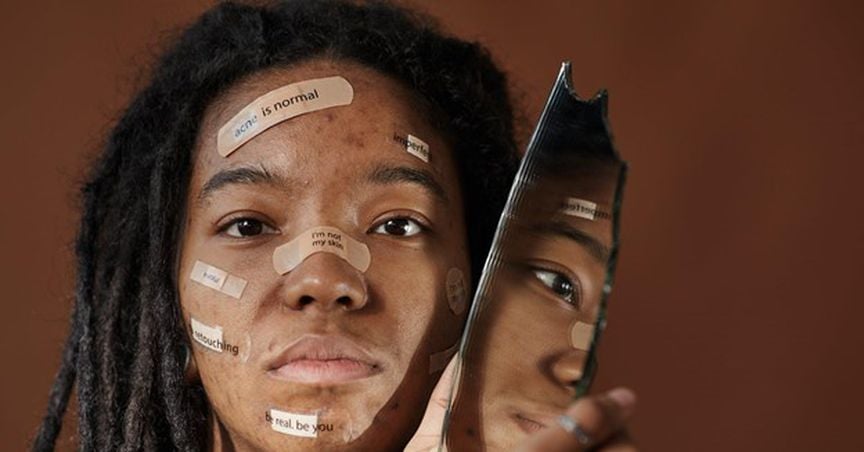Imagine having an important meeting, attending a family gathering, or going on a big date, only to find out you're having a breakout. It is an upsetting and distressing situation, but almost every one of us experiences it.
Acne is an ever-growing problem that targets people of all races and ages. It is most common in adolescents and young adults. About 4 out of 5 people ages 11 to 30 years old have breakouts at some point in their life. Although acne is not a life-threatening health issue, it can heavily impact someone's confidence and self-esteem.
Before battling acne, we have to understand what the problem is first.
What is Acne?
Acne, also known as acne vulgaris, is a skin disease consisting of blemishes that can occur in your face, neck, shoulders, upper arms, chest, and back.
Our body depends on the Sebaceous Gland to keep our hair and skin well lubricated. This gland is located under the skin and connected to our hair follicles. Moreover, Sebaceous Gland produces sebum, an oily substance covering our hair and skin to keep them from drying out. The sebum travels up our hair follicles, seeps out through the pores, and eventually onto the surface of our skin.
The hair follicles generally shed out dead skin cells. Then, the sebum carries them out of the body. However, when our body creates extra dead skin cells and sebum, they can stick together and clog our pores. It will then lead to skin blemishes or acne. Moreover, it is normal to find a small number of bacteria in our skin. However, if there's a clogged pore, this bacteria can flourish in the sebum, resulting in inflammation.
Depending on where the clog is located and whether you have inflammation, acne can appear in six (6) different ways. Here are the six (6) types of acne:
- Whiteheads
Whiteheads are non-inflammatory acne. They are clogged follicles, but the top of the pore is closed off from the air. Moreover, they look like a small bump protruding from the skin.
- Blackheads
Similar to whiteheads, blackheads are also non-inflammatory acne. However, the top of the pore stays open even though the rest are clogged. Moreover, it is black because the clog is exposed to air.
- Papules
Papules are tiny yet hard pink pimples. They form when the surrounding skin of the pore breaks down due to severe inflammation. Then, it leads to clogged pores that are tender to touch.
- Pustules
Pustules, also known as pimples, are pretty similar to papules. They occur when the skin surrounding the pore breaks down from inflammation. However, pimples are clogged with pus made out of dead white cells. Usually, they appear red and with white or yellow heads on top.
- Nodules
Nodules form when the clogged and inflamed pores suffer further irritation and then grow more prominent. However, compared to papules and pustules, nodules extend deeper underneath the skin.
- Cysts
Cysts are the largest form of acne. They are larger and painful lumps filled with pus that is usually red or white. The clogs are deep under the skin and are further below the surface than nodules.
In addition, certain things in your life can trigger and aggravate acne. This includes hormonal changes, a particular medication type, diet, extreme stress, and even genetics. Moreover, beware of various acne myths regarding the causes of acne. Do your research and be informed.
Common Acne Treatments
There are various treatments when it comes to clearing acne. Most of them tackle drying up excess oils or clearing away the bacteria in your face. Moreover, acne treatment differs depending on the severity of the problem. If you have moderate or mild acne, then your treatment should be relatively easy. However, if you have cystic acne, then the treatment will be more complex or challenging.
There are three (3) common acne treatments. They are:
1. Lifestyle Remedies
Changing your lifestyle can be enough for some people with a mild case of acne. However, since oil is among the top causes of acne, make sure to keep it away from your face. For example, you can tie up your hair, change your beddings weekly, wash your face 2-3x a day, and only use products that are not oil-based.
2. Topical Medication
Topical medications are creams, gels, and lotions you usually apply directly to your skin. They're commonly used in the morning and evening. Moreover, some of this medication is available over the counter, while others require a prescription.
When looking for an effective OTC topical medication, read their ingredient list and search for active ingredients like salicylic acid or benzoyl peroxide. These substances help fight inflammation and reduce the amount of oil your body makes.
If OTC medicine doesn't work for you, then get topical prescription medicines. For example, the dermatologist may prescribe tretinoin, clindamycin, a stronger version of benzoyl peroxide, or Accutane.
If you're uncertain about your medicine, information like BuzzRx's opinion on if Accutane is worth it or not is available to help ease your mind. However, you can always ask your doctor if you still have doubts.
- Oral Medication
Oral medications, also called systemic treatments since they're absorbed throughout the entire body. Unlike topical medications, oral medications are only available with a prescription from your dermatologist. Moreover, oral medicines are used to treat severe acne. There are three (3) systemic medicines used to treat acne: antibiotics, birth control pills, and isotretinoin.
The Bottom Line
Nearly everyone suffers from acne at some point in their life. So, the first step in combating it is identifying what type of acne you're experiencing. However, if you have severe acne, it would be best to visit a dermatologist. That way, it lessens the chance of misdiagnosis, and they can create a personalized skincare treatment for you.
Author Bio : Kenny Kline is a fitness and health writer with an eye for all things lifestyle. Kenny has always been in love with the idea of living life to the fullest, which you can see in his writing.
He spent his days reading up on the latest research about health, exercise, and nutrition—and when he's not doing that, he's cooking something delicious or trying out new recipes. He is also loves spending time outdoors—hiking, biking, skiing...you name it!





